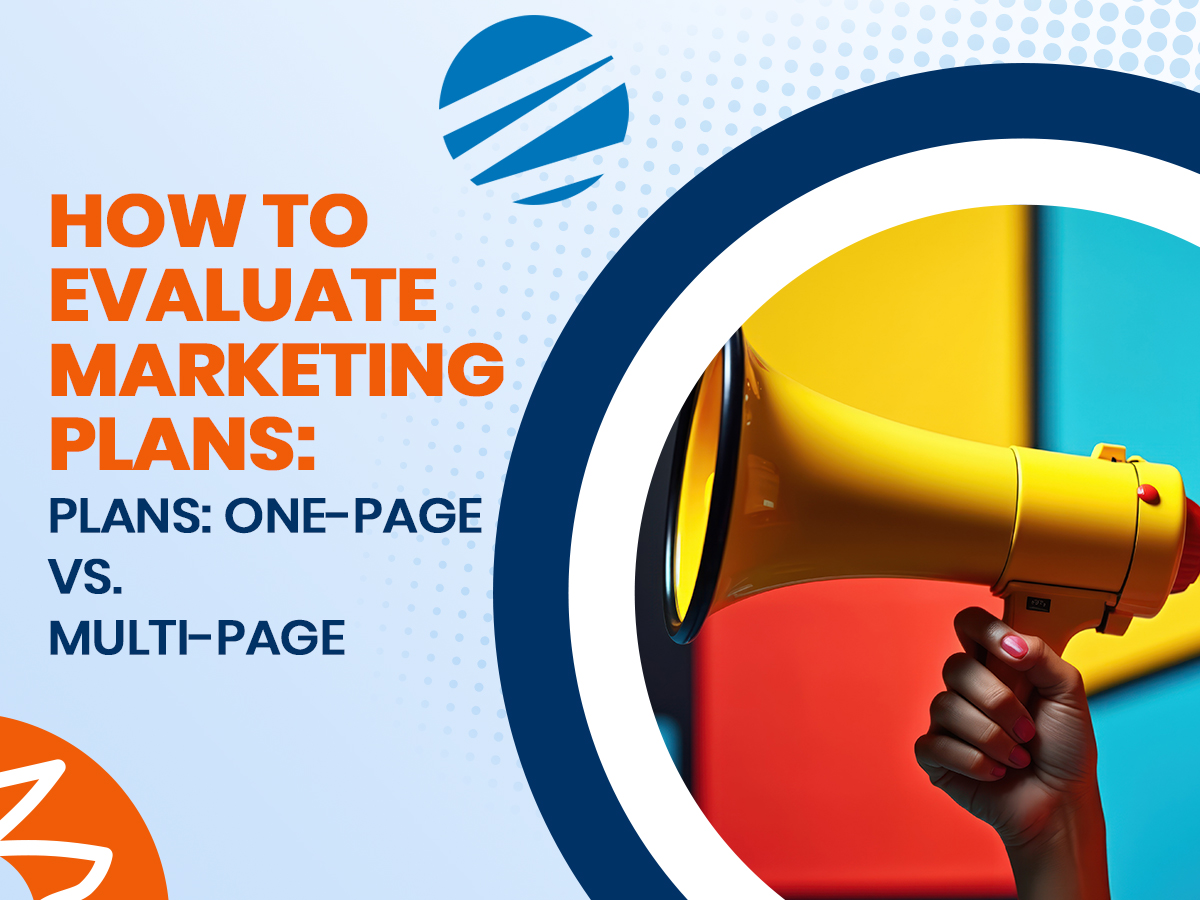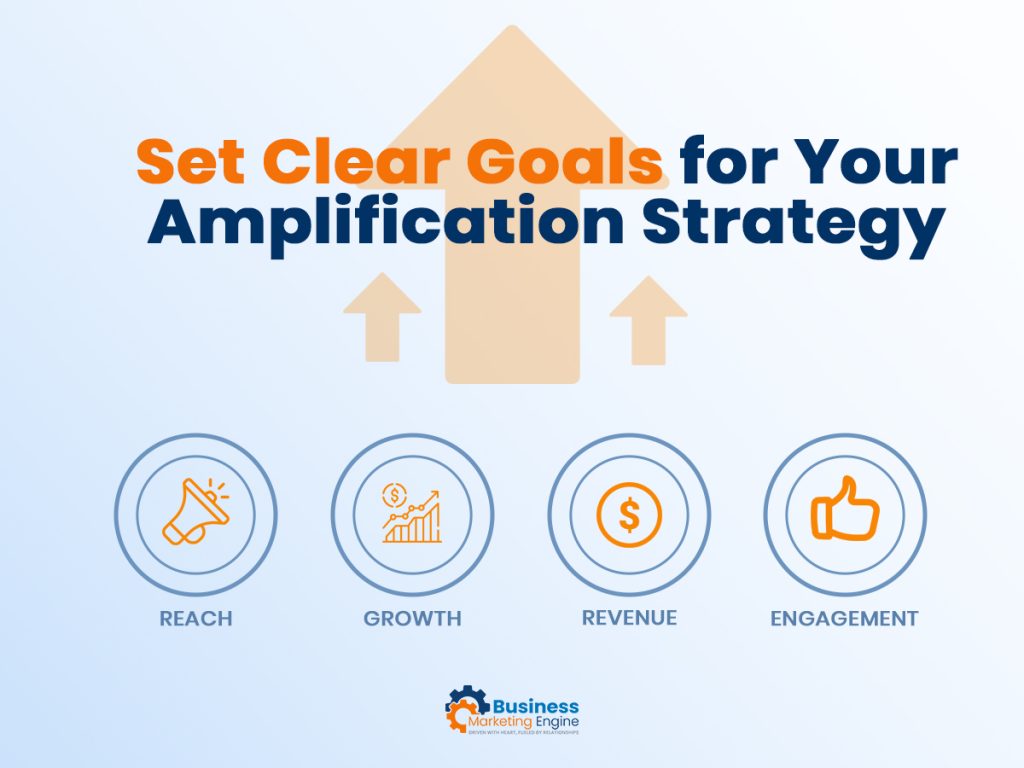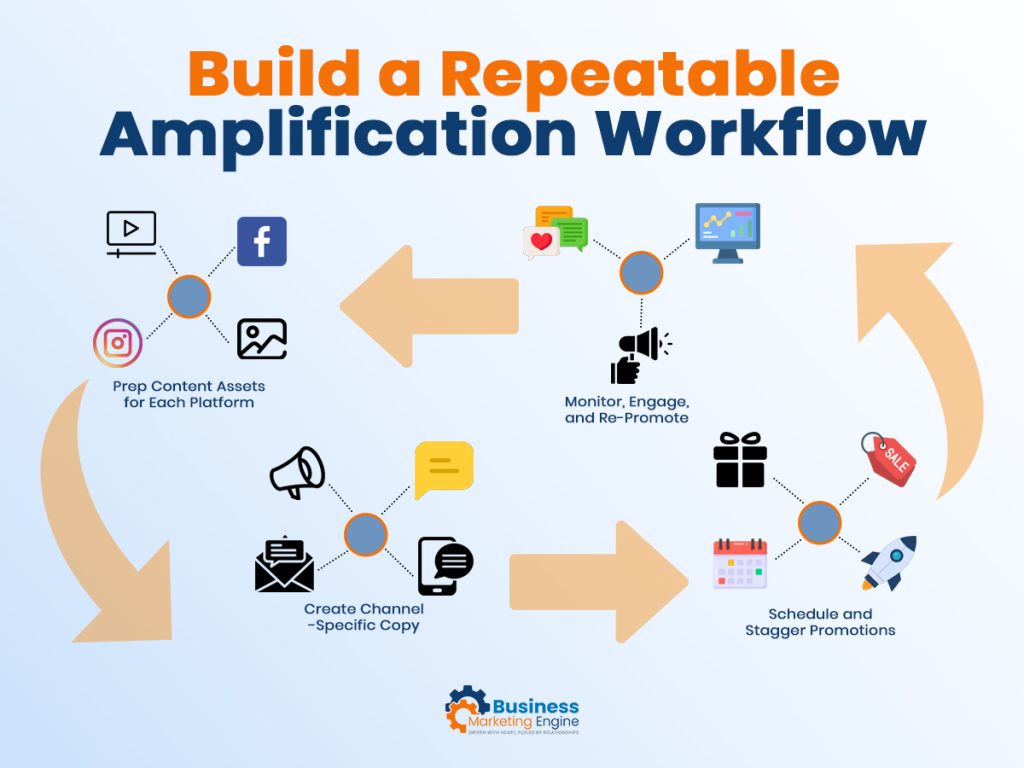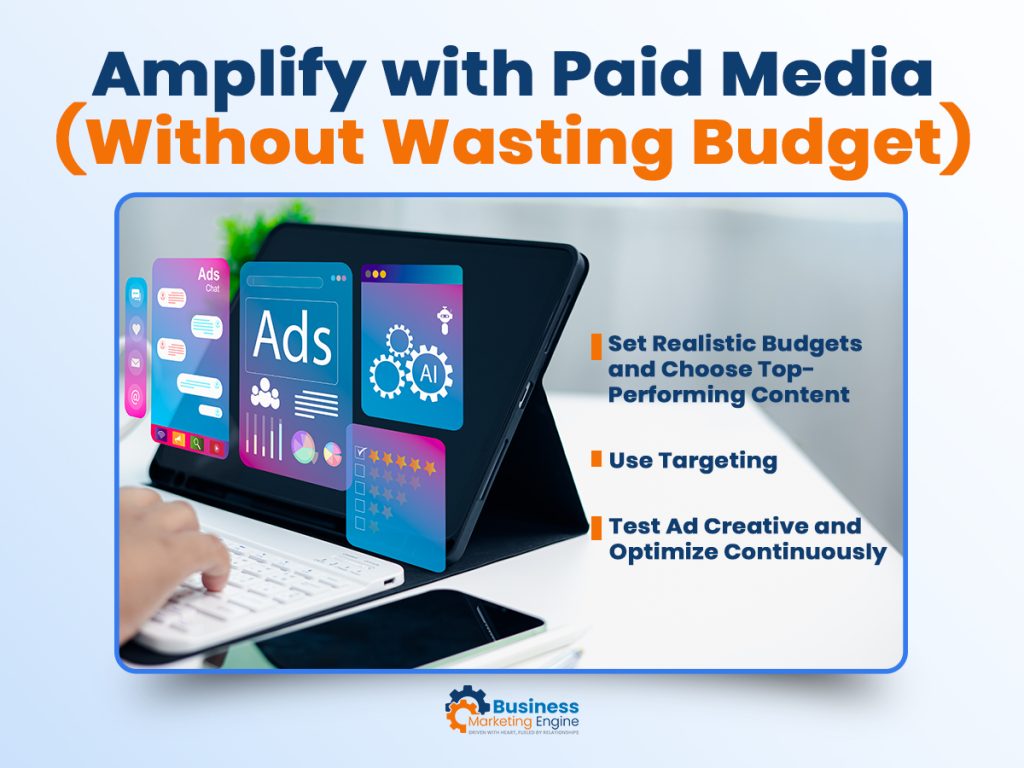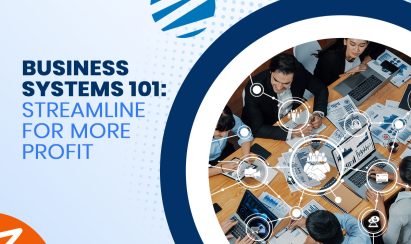Ever hit publish on a great piece of content and watched… nothing happen? It’s frustrating when your content doesn’t get the attention it deserves!
But don’t worry—this is where a content amplification strategy can be a game-changer.
In this blog, we’ll help you amplify your content, boost its reach, and turn it into a lead-generating machine. With the right content promotional plan, you can finally start seeing results.
What Is Content Amplification (and Why It’s Not Just Distribution)
Amplification vs Distribution: Key Differences
When you create content, a content distribution strategy is the first step—getting it out to your audience. But amplification is a whole different ballgame.
While distribution ensures your content reaches your audience, amplification actively works to increase its visibility and engagement. It’s about ensuring that content is seen by as many relevant people as possible across various platforms. This is what drives higher engagement and better results.
Why Amplification is Essential in 2025
In 2025, simply publishing content isn’t enough. Today’s audiences are constantly bombarded with information, and without the right content amplification strategy, your content could easily be lost. By using content visibility tactics like paid promotion or social sharing, you ensure your content cuts through the noise.
What Amplification Solves
A solid content amplification strategy tackles three key challenges:
Visibility: It pushes your content further, ensuring it gets in front of the right audience and stands out.
ROI: Amplification helps you get more out of your content, improving overall marketing performance and return on investment.
Lead Growth: By reaching a broader, more targeted audience, amplification drives more qualified leads, increasing conversions and sales.
Want to dive deeper? Check out our blog, “Content Amplification vs Distribution: Why It Matters” to learn more about how these strategies work together!
Set Clear Goals for Your Amplification Strategy
Define Your Desired Outcomes
Before diving into your content amplification strategy, it’s important to define what success looks like for you.
Are you focused on generating more leads, increasing website traffic, or boosting brand awareness? Setting clear goals from the start ensures that your efforts align with your overall business objectives. It also allows you to measure success more accurately.
Align Goals to Your Funnel Stage
Make sure your goals match the stage of the sales funnel you’re targeting:
TOFU (Top of Funnel): At this stage, the audience is just becoming aware of their problem, but doesn’t know about your solution yet. Focus on content that builds awareness of your brand and reaches a broad audience. This could include content such as blogs and videos that introduce prospects to your brand’s solutions.
MOFU (Middle of Funnel): This audience is now aware of their needs and is actively exploring different solutions. Engage and nurture leads by providing valuable, educational content. Try sharing case studies or product demos to help them compare options and make an informed decision.
BOFU (Bottom of Funnel): At this stage, your leads are very close to making a decision. They know exactly what they need and are comparing their options. Convert leads into customers with compelling content that utilizes strong calls to action, specialty offers, or loyalty rewards.
Choose KPIs to Measure
To measure the effectiveness of your amplification efforts, select the right KPIs. Track metrics like clicks, click-through rates (CTR), email signups, or demo requests to gauge your content’s performance. These KPIs will help you understand what’s working and where you need to adjust your strategy.
Foundation First — Prep Content That’s Worth Amplifying
Start with High-Quality, Evergreen or High-Performing Content
Great content is the backbone of any successful content amplification strategy. Focus on creating high-quality, evergreen content that remains relevant over time. Or, amplify high-performing content that has already shown success. This gives your amplification efforts a solid foundation and ensures your content provides long-term value.
Format for Flexibility
To make your content easily shareable and adaptable across different platforms, format it in a variety of ways. Break it into quote snippets, create video clips, or design engaging graphics that can be shared on social media. This increases the chances of your content being shared and consumed by a wider audience.
Add Strong CTAs and Lead Capture Opportunities
Don’t forget to include clear, compelling calls to action (CTAs) throughout your content. Whether it’s to download an ebook, sign up for email, or book a demo, make sure your content encourages engagement. Adding lead capture opportunities will help convert your audience and move them further down the funnel.
Choose Your Amplification Channels
Owned – Email, Website, Social, Blog
Owned channels are those you control directly. Use email marketing, your website, social media accounts, and your blog to share content with your audience. These channels are cost-effective, offer great control, and help you build long-term relationships with your audience.
Earned – Influencers, Shares, SEO, Media Coverage
Earned channels are when your content gets picked up or shared by others. This includes influencer partnerships, organic social shares, SEO rankings, and media coverage. These channels build credibility and expand your reach, often at little to no cost.
Paid – Social Ads, Native Ads
Paid channels could include social media ads as well as native ads. These channels allow you to boost your content’s reach quickly, targeting specific audiences and driving immediate traffic. While they require investment, paid channels can deliver quick results when used strategically.
Channel Matrix – When to Use What
Decide which channel to use based on your goals and audience. For brand awareness, focus on earned and paid channels like influencers and social ads. For deeper engagement, use owned channels such as email or your blog. A balanced approach using all three will maximize your content’s reach and impact.
Unsure which platforms would work best for your business and unique goals? Chat with our senior strategists today!
Build a Repeatable Amplification Workflow
Step 1 – Prep Content Assets for Each Platform
Create and customize your content for the platforms you plan to use. Whether it’s a blog, video, or graphic, ensure each asset is tailored to fit the specific channel’s format and audience.
Step 2 – Create Channel-Specific Copy
Write copy that’s designed to resonate with the audience of each platform. A social media post will look different than an email or a blog post. So, ensure your messaging is consistent but adapted for the platform’s tone and format.
Step 3 – Schedule and Stagger Promotions
Don’t overwhelm your audience with content all at once. Instead, stagger your promotions across channels. Use a content calendar to schedule posts at optimal times to ensure maximum reach and engagement.
Step 4 – Monitor, Engage, and Re-Promote
Keep an eye on how your content is performing. Engage with your audience by responding to comments and feedback. Re-promote high-performing content at different times to extend its life cycle and boost visibility further.
Repurpose Content to Expand Reach
Turn Blogs into Carousels, Reels, Infographics
Take your written content and transform it into visual formats like Instagram carousels, reels, or infographics. This not only makes the content more engaging but also reaches different audiences who prefer visuals over text.
Break Long-Form into Snackable Assets
Long-form content doesn’t have to stay long! Break it into smaller, easily digestible pieces like quotes, tips, or short videos. These bite-sized assets are perfect for social media and can help expand your reach quickly.
Use Webinars, Podcasts, or Interviews as Source Content
Webinars, podcasts, or interviews can be repurposed into multiple content formats—such as blog posts, social media clips, or email snippets. By repurposing this valuable content, you can continue to engage your audience with fresh, varied formats.
Want more amplification tips? Check out our blog “10 Essential Content Amplification Tips” to dive deeper into effective strategies for boosting your content’s reach!
Amplify with Paid Media (Without Wasting Budget)
Set Realistic Budgets and Choose Top-Performing Content
To avoid wasting your budget, start by setting a realistic budget based on your goals. Focus on amplifying content that has already shown promise and performs well organically. This ensures that you’re investing in content that’s more likely to generate results.
Use Targeting
Leverage powerful targeting options like lookalike audiences and retargeting to ensure your paid media reaches the right people. Lookalike audiences are groups of people who share similar characteristics with your existing customers. Retargeting shows ads to users who have previously interacted with your content or website. Both of these strategies help ensure your paid media reaches the most relevant audience, boosting the chances of conversion.
Test Ad Creative and Optimize Continuously
Don’t just set it and forget it. Test different ad creatives and optimize based on performance. Track what resonates with your audience, and refine your ads to ensure you’re getting the most out of your budget.
Want to learn more about how to make the most of your ad spend? Don’t miss our other blog, “Paid Ads for Content: Maximize Every Dollar”.
Leverage Partnerships & Influencers
Collaborate with Aligned Brands or Creators
Partnering with brands or creators that share similar values or target audiences can amplify your reach. Collaboration allows you to tap into their audience while providing fresh, valuable content.
Co-promote Gated Assets or Events
Working with partners to co-promote gated content (like eBooks or whitepapers) or events can generate buzz and drive traffic. Shared resources and audience engagement create a win-win scenario for both parties.
Micro-Influencers for Niche Targeting
Micro-influencers, with smaller but highly engaged audiences, are perfect for targeting specific niches. Their authenticity and trust within their communities make them ideal partners for more focused, effective marketing.
Want to learn how to unlock more content reach? Check out our blog “Unlock Massive Content Reach with Partnerships” to discover how collaborations can take your content further!
Measure, Optimize, and Scale
Track by Channel and Content Type
Track performance across different channels (social media, email, website, etc.) and content types (blogs, videos, infographics) to understand what’s working. This helps you focus on the platforms and formats that generate the most engagement.
Look at Time-on-Page, Engagement, Conversions
Focus on key metrics like time spent on page, social media engagement, and conversion rates. These insights tell you how well your content is resonating with your audience and driving them to take action.
Refine Based on Top Lead-Generating Formats
Analyze which content formats are driving the most leads and prioritize them in your strategy. Whether it’s video, blog posts, or downloadable resources, refining your content mix based on performance helps you optimize results.
Build a Quarterly Reporting System for Growth
Set up a quarterly reporting system to track your progress and identify areas for improvement. Regularly reviewing performance ensures that you’re meeting your goals and allows you to adjust strategies for continued growth.
Conclusion: Build Smarter, Amplify Louder, Convert More
Amplification isn’t just an afterthought—it’s the key strategy that can make your content work harder for you. By using the right tools, refining your approach, and testing, you can build a stronger, more effective content amplification strategy.
Take it step by step, and remember, we’re here to help! If you need support in amplifying your content and growing your business, reach out to our team today.
